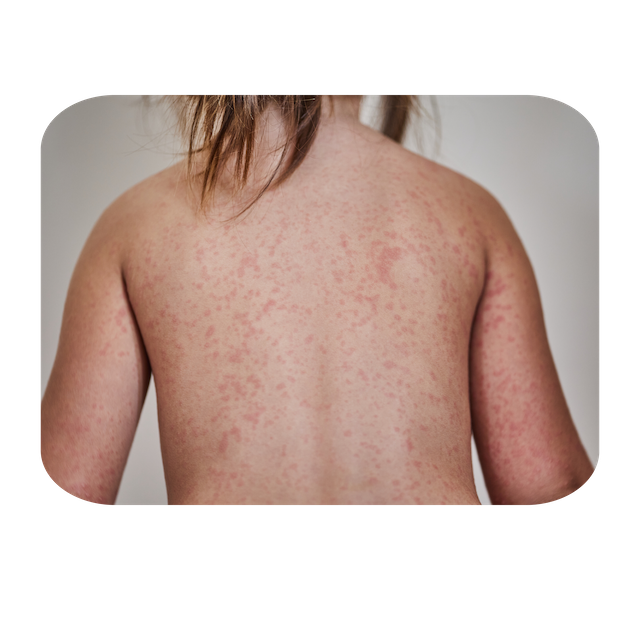Do you know that…?
- It is also called „the sixth disease of childhood”
- It is an eruptive viral disease caused by Human Herpes Virus type 6
- Generally, it occurs between 9-12 months old, but the age range is between 2 weeks and 3 years old
- The virus can be detected in saliva
- Man is the only known host
- It is very unlikely that a child who has had the disease once to have it again
How is the virus transmitted?
Maternal antibodies protect the newborn from this virus, but as their concentration decreases during the first year of the child’s life, the baby becomes susceptible to infection.
The virus is transmitted through saliva or nasal secretions of an infected child or an apparently healthy adult. By the age of 24 months old, more than half of children will have had the disease.
How long does it take for roseola infantum symptoms to start showing after exposure to the virus (incubation period)?
After a healthy child had a contact with the infected child, it should take about 10 days for symptoms to appear in the exposed child.
How does the infection manifest itself?
- Some infected children show no symptoms
- Sudden onset in a previously apparently healthy infant
- Fever > 39.5 degrees Celsius, lasting for 3 days
- Generally without other specific symptoms
- Rarely, signs of respiratory tract infection (nasal secretions, cough, etc.) or digestive tract infection may be present, with enlarged neck lymph nodes
- A small percentage of children may have seizures in a febrile realted episode
- Typically, after the fever stops, a characteristic skin rash appears that will last for about 2 days.
What blood tests can be done?
Roseola Infantum is a frequent reason for presentation to the emergency room because of fever, which usually occurs in the absence of other symptoms. That is why the doctor can ask for a blood count and possibly for other investigations, depending on the child’s age and history. Sometimes a test that detects the presence of the virus in the blood may be needed.
The family doctor or pediatrician can diagnose Roseola Infantum just by acknowledging the medical history that follows the classic sequence. This was described previously. When the characteristic rash is present, there is no need for further tests.
Treatment
The treatment is supportive: antipyretics can be offered to lower the fever or other symptomatic drugs. Hydration is also extremely important.
The disease lasts about 7 days, is usually self-limiting, this means it’s healing „by itself”. Complications are rare.


Orice comentariu este binevenit. Un medic din echipa Busola Pediatrică îți va răspunde în cel mai scurt timp posibil. Înainte de a scrie un comentariu, te rugăm să consulți politica de utilizare a site-ului.